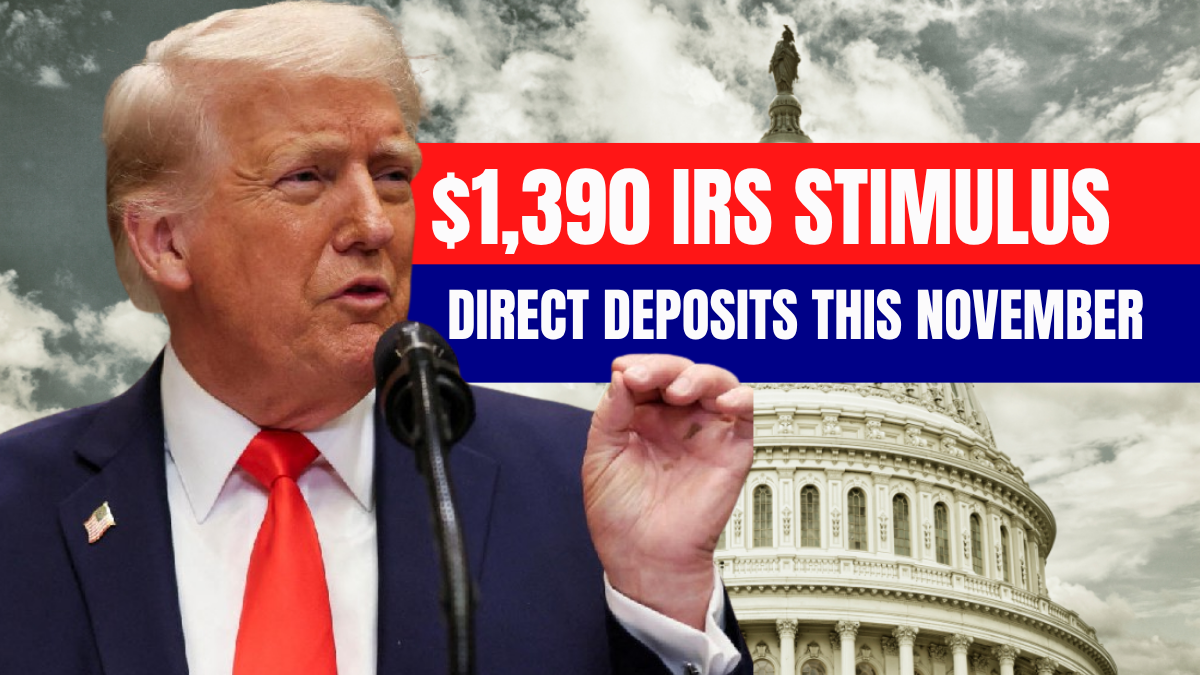Internal Revenue Service (IRS) has begun rolling out $1,390 inflation relief stimulus direct deposit payout in November 2025. This stimulus relief has started rolling out to provide crucial financial support to low- and middle-income Americans reeling under high inflation and increasing costs of living in 2025. Launched as a targeted measure, this payment is not universal but instead benefits those most affected by current economic conditions.
The Inflation Stimulus: Background and Rationale
In response to persistent inflationary pressures and the resultant surge in everyday expenses, policymakers in the U.S. approved a special one-time payment through the IRS. The intent is to partially offset the added burden from spikes in food prices, housing, and healthcare. The federal government allocated surplus reserves specifically for this temporary initiative, differentiating it from prior pandemic-era universal stimulus checks.
Who Qualifies for the $1,390 Payment?
Eligibility is determined mainly by income and tax filing status for the 2024 tax year:
- Single filers with an adjusted gross income (AGI) under $75,000 qualify for the full $1,390 payment.
- Married couples filing jointly need a combined income under $150,000 to receive $2,780.
- Recipients of government benefits, including Social Security, SSI, and SSDI, are included if they meet residency and income requirements.
- Eligible dependents may receive a partial amount, with specific criteria based on the latest IRS guidelines.
No further paperwork is required for those who have filed their 2024 tax returns; the IRS automatically processes payment using on-file information.
Payment Distribution Method and Timeline
The stimulus payments began processing in early November 2025, prioritizing electronic direct deposit to minimize delays. Most direct deposits arrive within three to five business days after issuance. For taxpayers who have not provided bank details, checks will be mailed to the address on record, which may take additional time for postal delivery.
To help recipients track their payments, the IRS relaunched its “Get My Payment” portal. This tool allows individuals to see their payment status, track delivery, and update bank or address information if necessary.
Key Differences from Previous Stimulus Rounds
This 2025 relief is more targeted and limited in scope compared to COVID-19 pandemic measures:
- Payments are only available to those meeting specific income thresholds and filing requirements, rather than being distributed to most U.S. adults.
- The funding derives from surplus federal reserves, and it is not expected to become a recurring stimulus.
- Recipients do not need to submit a new application; automatic payment processing is in place for eligible individuals.
Impact on Americans: Why the Relief is Timely
Recent data indicates that inflation rates have remained above the Federal Reserve’s target for much of 2025, placing renewed strain on household budgets. Essential items—groceries, medicines, gas, and utilities—have seen ongoing price hikes, hitting low- and middle-income groups disproportionately hard.
The relief payment is expected to provide rapid liquidity, enabling families to cover urgent needs and offset increases in rent or essential services. Policymakers have described this as a “targeted bridge” until broader economic stability resumes.
Common Questions Answered
1. What if I haven’t filed taxes?
Late filers or non-filers can often use simplified portals or file soon to become eligible. However, the fastest way to get payment is to file a 2024 return.
2. Will this count as taxable income?
The 2025 IRS inflation relief payment is not considered taxable income and will not affect eligibility for other federal assistance programs.
3. What about citizens abroad or new immigrants?
Only U.S. residents and citizens with a valid social security number and qualifying income are eligible.
Next Steps: How to Ensure Smooth Delivery
- Check the IRS “Get My Payment” page for updates and status.
- Ensure your mailing and bank information is accurate and updated with the IRS.
- Respond to any IRS communications if additional documentation is needed.
Broader Economic Context
Unlike past universal stimulus programs, 2025’s IRS inflation relief is strictly needs-based, aiming to optimize impact for those most vulnerable to price instability. It reflects a broader trend in policy: moving from broad crisis response toward finely tuned economic interventions.
As the economy navigates persistent inflation and rising costs, targeted relief measures may offer valuable lessons for future federal response efforts. The latest IRS stimulus initiative highlights the evolving role of federal agencies in direct economic support, balancing fiscal responsibility with social need.
